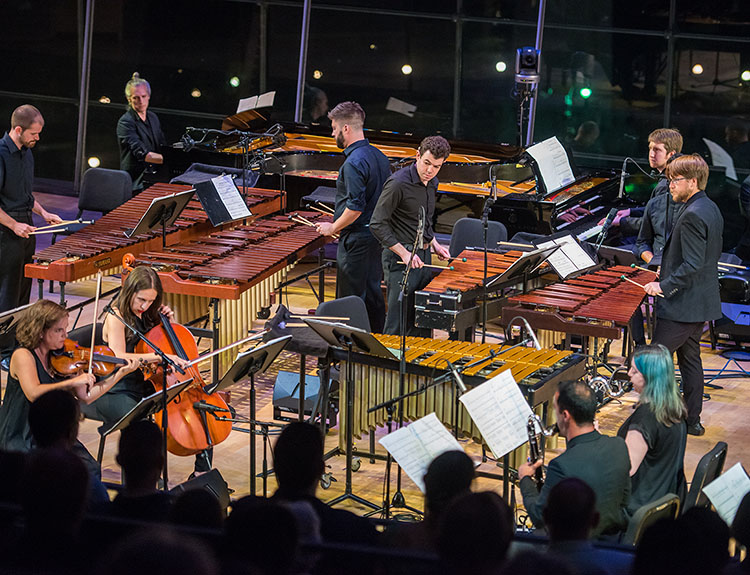The
extraordinary success the June in Buffalo Festival
has enjoyed for more than 30 years derives in great part from the many
alliances it has forged with key actors in the new music scene. Such is the
case of the partnership June in Buffalo has developed with cellist Lauren
Radnofsky and conductor Brad Lubman, who
co-direct NY-based Ensemble Signal.
Signal, described as “one of the most vital groups of its kind” by the New York
Times, has become a constant in June in Buffalo’s roster of visiting ensembles
over the past several years, providing composers—both seasoned and
emerging—with world-class performances of their works.
(Ensemble Signal performing Reich's Music for 18 Musicians)
Signal’s first concert at June in Buffalo 2019
will take place on June 5th at 4pm in the University at Buffalo’s
Baird Recital Hall, where they will bring to life pieces by half a dozen of the
festival’s participant student composers. The ensemble will then dedicate the
next two days to add the finishing touches to a selection of 21st
century chamber music gems by June in Buffalo’s senior composers, which they
will perform on Saturday June 8th at 7:30pm in Slee Hall.
Anna Clyne
Signal’s
Saturday concert will open with Anna Clyne’s
Just
As They Are (2015), scored for what has become a standard formation in
modern chamber music: the Pierrot ensemble,
comprised of flute, clarinet, piano, violin and cello, and named after Schoenberg’s iconic Pierrot lunaire (1912).
The title and conceptual inspiration for the work come from an interview John Cage gave shortly
before passing, in which he said, “I love sounds just as they are. I love the
activity of sound. I don’t want a sound to pretend that it’s a bucket or that
it’s president or that it’s in love with another sound. I just want it to be a
sound.” In its compact five minutes, Just
As They Are superimposes audio fragments from this interview by Cage with a
modern-day passacaglia—an originally Baroque musical form based on a repeated bass
line and recurring chord progression.
The
next two pieces on the program rely on the same Pierrot instrumentation as well
and, coincidentally, they also utilize quotes by other artists as their
starting points. Lei
Liang’s Aural
Hypothesis (2010) builds on Chou Wen-chung’s
evocative analogy that “calligraphy is music in ink, and music is calligraphy
in sound” to propose how basic lines, i.e. a simple curve or a straight line,
might be translated into music. Listeners aware of Liang’s inspiration will
soon find the audiovisual correlations the composer intended, such as, for
instance, long sustained notes to represent straight lines or upward scales to
depict ascending ones.
Then,
Signal will play Norwegian composer Rolf
Wallin’s The Age of Wire and String
(2004). This work borrows its title, and the titles of each of its eight
miniature-like movements, from the eponymous collection of short stories by Ben Marcus. Marcus’ inventive
stories paint bizarre, almost-familiar worlds in which the laws of nature are
different from ours, which the composer found to be a fitting analogy to “the
abstract world of music, especially modern art music, with its ability to
transport our mind to places never visited before.”
Wallin's The Age of Wire and String (2004), performed by the Bodø Sinfonietta






No comments:
Post a Comment
Note: Only a member of this blog may post a comment.